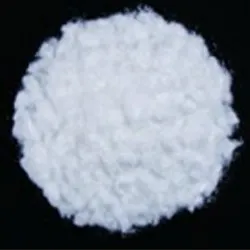
Influence of Emulsifier 481 on Bread Texture and Freshness Quality
The Role of Emulsifier E481 in Bread Production
Bread is one of the oldest and most widely consumed staples in the world. As baking techniques have evolved, so too have the ingredients that improve the texture, shelf life, and overall quality of bread. Among these ingredients, emulsifiers play a crucial role. One such emulsifier is E481, or sodium stearoyl lactylate. This article will explore the significance of E481 in bread production, its benefits, and its impact on the final product.
What is E481?
E481 is a food additive that functions primarily as an emulsifier, which means it helps mix ingredients that normally do not blend well, such as oil and water. It is derived from stearic acid and lactic acid and is considered safe for consumption, being used in various food products, particularly in baked goods. The additive is recognized by food safety authorities around the world, including the FDA in the United States and EFSA in Europe, which classify it as a safe food ingredient.
The Functions of E481 in Bread
The primary role of E481 in bread is to improve dough stability and texture. Here are several ways it achieves this
1. Emulsification By facilitating the mixing of fats and water, E481 helps to create a homogenous dough. This results in a better distribution of ingredients, which is essential for achieving a consistent texture and uniform crumb structure in the finished bread.
emulsifier 481 in bread

2. Dough Strengthening E481 contributes to the formation of gluten networks within the dough. Gluten is crucial for the elasticity and structure of bread. By improving gluten formation, E481 enhances the overall dough strength, which can lead to better gas retention during fermentation. This is significant for achieving a good rise in the oven.
3. Moisture Retention Bread made with E481 often has improved moisture retention. This quality is vital for maintaining freshness and extending the shelf life of the product. A well-moistened bread stays soft longer, reducing the likelihood of staling, which is particularly important for commercially produced bread that must endure longer storage times.
4. Improved Volume and Texture The presence of E481 can enhance the overall volume of the bread. By stabilizing the gas bubbles formed during fermentation, it allows the dough to rise better and achieve a light and airy texture. This is particularly beneficial in bread types where a soft crumb is desired.
5. Extended Shelf Life By preventing staling and maintaining moisture, E481 contributes to an extended shelf life for bread products. For bakeries and manufacturers, this is economically advantageous as it reduces waste and requires less frequent production schedules.
Conclusion
In conclusion, emulsifier E481 (sodium stearoyl lactylate) plays a significant role in modern bread production. Its ability to improve dough stability, strengthen gluten networks, retain moisture, enhance volume, and extend shelf life makes it a valuable ingredient for bakers seeking to produce high-quality bread. As consumers continue to demand products that last longer and maintain their freshness, the role of emulsifiers like E481 will likely remain significant in the baking industry. As with any food additive, it is important for consumers to be aware of what they are eating; however, the use of E481 is supported by extensive safety evaluations, confirming its status as a beneficial component in the quest for better bread. With continued advancements in food science, we can expect the application of emulsifiers in baking to expand even further, allowing for greater innovations in bread production and offering consumers a wider array of high-quality bread options.
-
Pure Sodium Dichloroisocyanurate Dihydrate | Powerful DisinfectantNewsAug.29,2025
-
Industrial Chemicals: Quality & Purity for Every IndustryNewsAug.28,2025
-
Nitrile Rubber Honoring Strict Production StandardsNewsAug.22,2025
-
Aspartame Ingredients Honoring Food Safety ValuesNewsAug.22,2025
-
Fertilizer for Balanced Plant NutritionNewsAug.22,2025
-
Cyanide Gold Processing with High Purity AdditivesNewsAug.22,2025
-
Formic Acid in Textile Dyeing ApplicationsNewsAug.22,2025
Hebei Tenger Chemical Technology Co., Ltd. focuses on the chemical industry and is committed to the export service of chemical raw materials.
-

view more DiethanolisopropanolamineIn the ever-growing field of chemical solutions, diethanolisopropanolamine (DEIPA) stands out as a versatile and important compound. Due to its unique chemical structure and properties, DEIPA is of interest to various industries including construction, personal care, and agriculture. -

view more TriisopropanolamineTriisopropanolamine (TIPA) alkanol amine substance, is a kind of alcohol amine compound with amino and alcohol hydroxyl, and because of its molecules contains both amino and hydroxyl. -

view more Tetramethyl Thiuram DisulfideTetramethyl thiuram disulfide, also known as TMTD, is a white to light-yellow powder with a distinct sulfur-like odor. It is soluble in organic solvents such as benzene, acetone, and ethyl acetate, making it highly versatile for use in different formulations. TMTD is known for its excellent vulcanization acceleration properties, which makes it a key ingredient in the production of rubber products. Additionally, it acts as an effective fungicide and bactericide, making it valuable in agricultural applications. Its high purity and stability ensure consistent performance, making it a preferred choice for manufacturers across various industries.





